
15 Life on Land (152)
Protect, restore and promote sustainable use of terrestrial ecosystems, sustainably manage forests, combat desertification, and halt and reverse land degradation and halt biodiversity loss
Part III: Clear-cut controversy in the Cumberlands
Written by Anita Wadhwani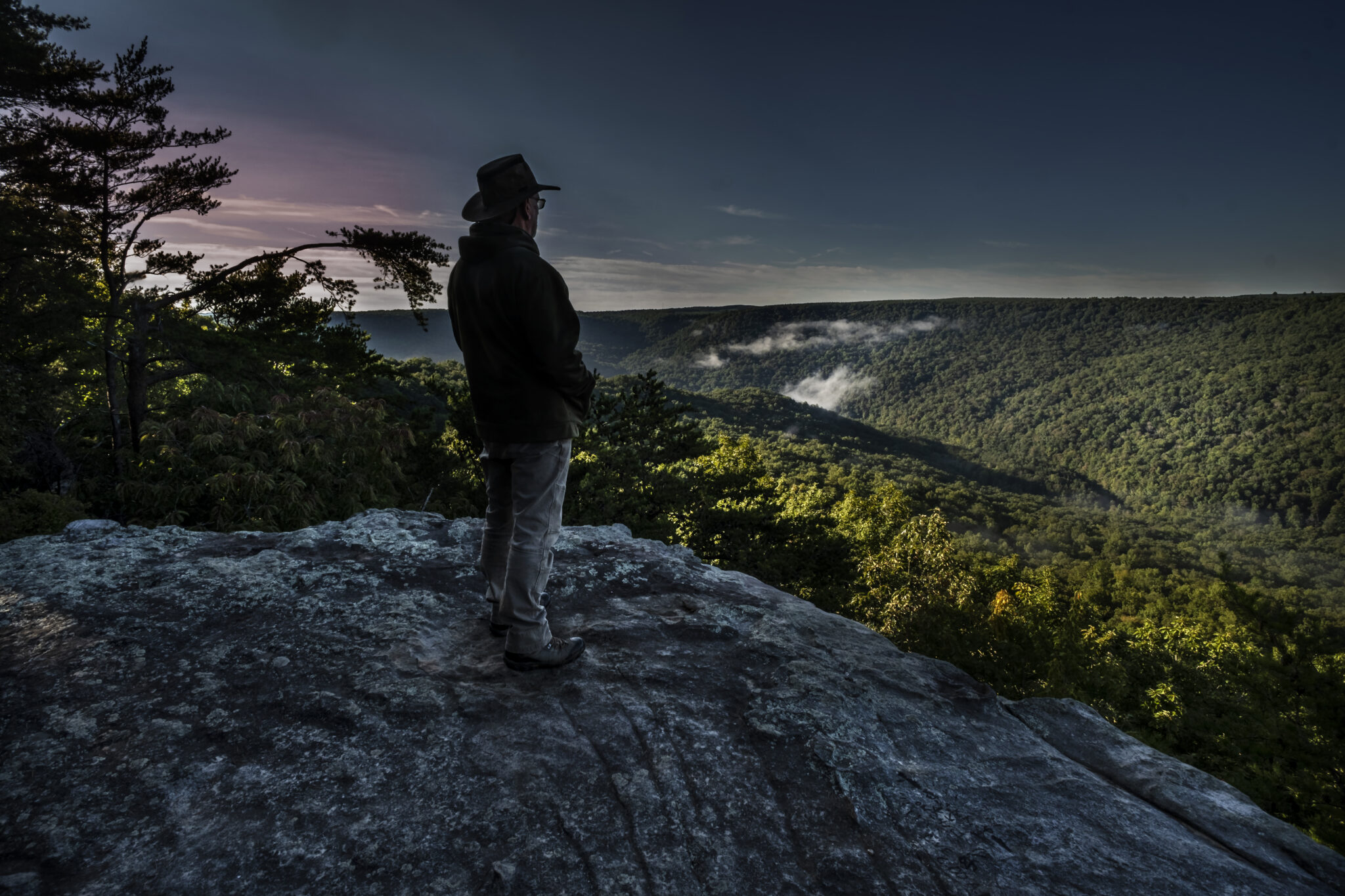
Legal opinion cuts path for TWRA forest clearing in White County’s Bridgestone wilderness area despite local opposition
This story was originally published by Tennessee Lookout.
A controversial plan by the Tennessee Wildlife Resources Agency officials to clearcut forest in a popular hunting, hiking and recreation area in order to create habitat for Northern bobwhite quail has gotten a legal go-ahead, despite opposition from residents and local leaders in White County, a bipartisan group of lawmakers and environmental groups.
The 16,000-acre Bridgestone Firestone Centennial Wilderness Area, a forested area adjacent to Fall Creek Falls State Park and Virgin Falls State Natural Area, was a late 1990’s gift to the state from the tire company that came with certain strings attached, including that state officials “preserve the property predominantly in its present condition as a wilderness area.”
The Tennessee Wildlife Federation was charged with ensuring the state honors those conditions.
On Friday, a spokeswoman for the Tennessee Wildlife Federation confirmed that outside legal counsel hired to review the state’s clearcutting plan found it “meets the requirements” of the gift.
“Speaking broadly as a conservation nonprofit, we have supported throughout our 75-year history the science-based, proactive management of lands to maintain or restore diverse habitats and diverse wildlife,” Kate Hill, a Tennessee Wildlife Federation spokeswoman, said via email. “The fact is savannas are an endangered habitat in the Southeast that were once common and provided essential habitat to many species across Tennessee.”
Neither the Tennessee Wildlife Federation nor the Tennessee Wildlife Resources Agency has communicated the outcome of the legal review to local residents, who have complained for months that they have been kept in the dark and offered no meaningful opportunity to weigh in on plans to radically alter a landscape that is both beloved and central to the local economy.
- tennessee wildlife resources agency
- clearcut in bridgestone wilderness
- hardwood clearcuts tennessee
- quail unlimited
- quail habitat restoration
- quail reintroduction in tennessee
- twra clearcut
- white county clearcut
- opposition to twra clearcut
- hardwood clearcut cumberlands
- tennessee wildlife federation clearcut
Updated 8/14: Plans for Foothills Parkway extension from Wears Valley to Gatlinburg enter newest public input phase
Written by Thomas Fraser and Rick Vaughan
Critics have called for full Environmental Impact Statement amid threat to Southern Appalachian habitats; previous draft EIS identifies many rare, notable species in project right of way
GATLINBURG — Proposed construction of an unfinished section of Foothills Parkway from Wears Valley to the Gatlinburg Spur would traverse 9.8 miles of natural beauty that is home to multiple rare species identified in a 1994 study.
The federal government last month opened the latest round of public comment on the project, which would traverse Buckeye Knob and Cove Mountain and multiple aquatic and karst environments. Concerns raised by the public over the decades range from impacts on domestic water supplies and endangered or threatened species to the fact the roadway might be a catalyst for excessive tourism infrastructure in Townsend and Wears Valley.
The proposed route also extends through dense areas of pyrite, a highly acidic sulfate mineral (also known as fool’s gold) that can poison entire watersheds when exposed if proper erosion controls aren’t followed. Contamination of streams and creeks led to the decades-long delay in full construction of the existing parkway section (known as the missing link) that extends from Walland to Wears Valley.
- foothills parkway extension
- opposition to foothills parkway extension
- smokies foothills parkway
- nepa
- endangered species foothills parkway
- fhwa federal highway administration
- ea environmental assessment
- nepa national environmental policy act
- nhpa national historic preservation act
- national parks conservation association
- pyrite
- jeff hunter
- missing link of foothills parkway
The ivory-billed woodpecker is officially extinct, and it strikes a chord in Knoxville
Clinging to a maple in the bayou, Jim Tanner finally had the rare nestling in his grasp.
He fitted it with a numbered leg band and placed the bird back in its hole high off the ground.
But true to its seldom-seen self, the juvenile ivory-billed woodpecker squirmed free and fluttered to the base of a giant maple tree in a southern Louisiana swamp owned at the time by the Singer Sewing Machine Co.
The year was 1936, and Jim Tanner was in the midst of doctorate research at Cornell University funded by the Audubon Society as part of a push to prevent the pending extinctions of multiple bird species, including the California condor, roseate spoonbill, whooping crane and ivory-billed woodpecker. Eighty-five years later, the regal woodpecker would be the only one grounded for eternity.
In the heat and rain of mucky, gassy bayous, Tanner compiled data on the range, population, habitat and prevalence of ivory-billed woodpeckers. He camped for weeks at a time in the swamps of the birds’ original range.
On this day, his only goal was to band the bird but he rushed down the tree and picked up the agitated but uninjured woodpecker.
He also wanted photographs.
Tanner took advantage of the moment.
He placed the bird upon the shoulder of an accompanying and accommodating game warden for 14 shots from his Leica.
They were probably the first, and perhaps the last, photographs of a juvenile ivory-billed woodpecker photographed by Tanner in its natural habitat. He named the bird Sonny, and he was the only known member of the species to be banded with a number.
The regal, smart, athletic bird, which peaceably flew over its small slice of Earth for some 10,000 years, was declared extinct last month by the Fish and Wildlife Service. Twenty-two other species also qualified for removal from the Endangered Species List — in the worst possible way.
The ivory bill inhabited the swamps of the Deep South, far removed from Rocky Top, but old visages of the departed were found in Little Switzerland in South Knoxville. The work of Tanner, who would go on to complete a rich ecological research career at the University of Tennessee, has been memorialized by a talented East Tennessee science writer.
And the Southern Appalachian region has other long-gone kinships with species that vanished from the Earth a long time ago.
Tennessee Lookout: (Part II) Thick covey of opposition to TWRA quail management at expense of mature hardwood forest
Written by Anita Wadhwani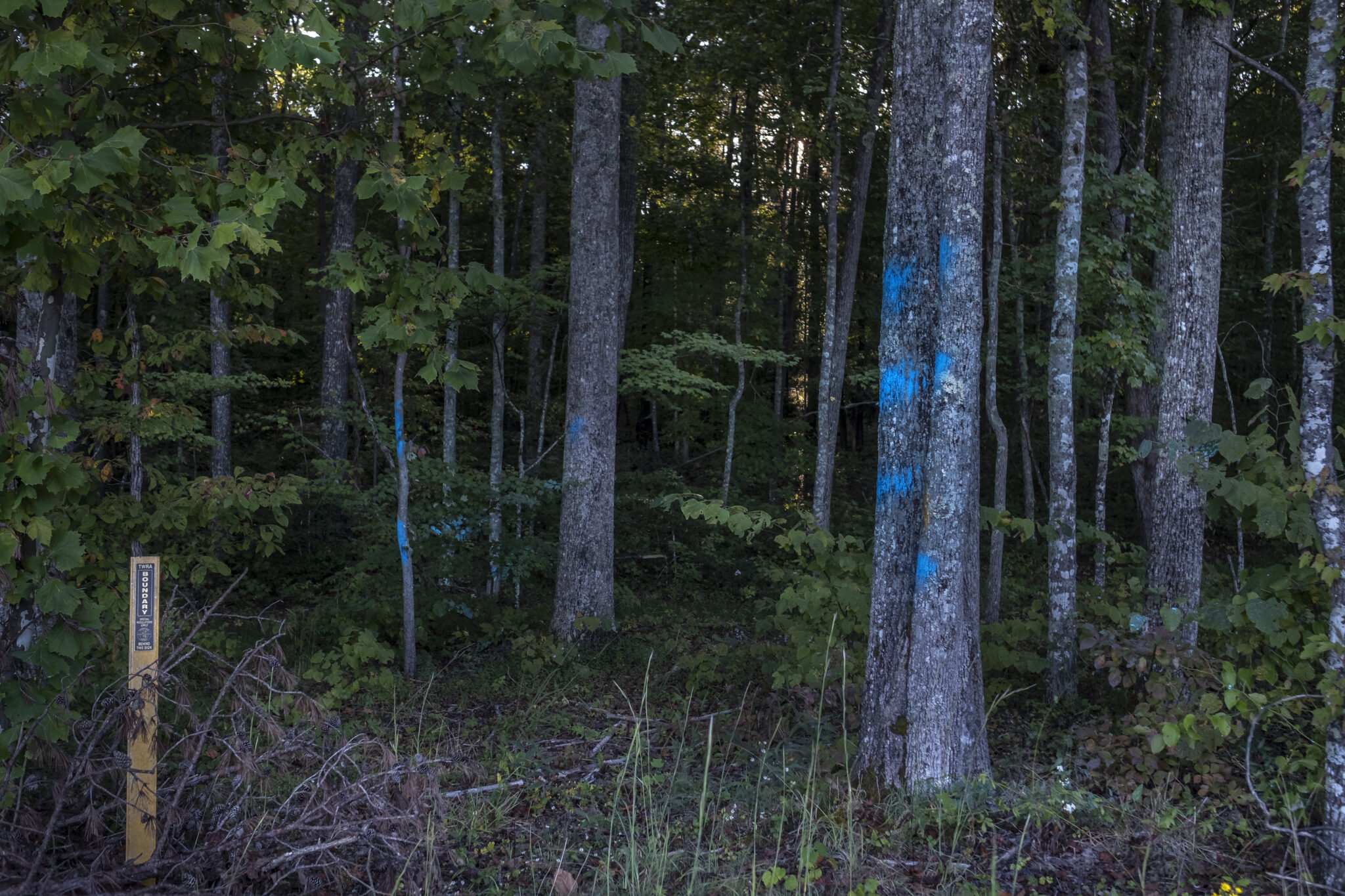 Tree trunks in the Bridgestone Firestone Centennial Wilderness Area in Sparta marked for clearcutting, despite local opposition. John Partipilo/Courtesy Tennessee Lookout
Tree trunks in the Bridgestone Firestone Centennial Wilderness Area in Sparta marked for clearcutting, despite local opposition. John Partipilo/Courtesy Tennessee Lookout
Hundreds of citizens publicly reject TWRA Middle Tennessee deforestation plans
This story was originally published by the nonprofit Tennessee Lookout and is shared (with much appreciation) with Hellbender Press via Creative Commons License.
Officials with the Tennessee Wildlife Resources Agency faced considerable pushback Monday night (Oct. 4) at a public meeting in Sparta over plans to raze old growth forest in a popular hunting and recreation area located about halfway between Nashville and Knoxville.
A standing room-only crowd of more than 200 people filled the town’s small civic center to hear directly from state officials about what had been — until now — an unpublicized internal agency plan to clear forest on public lands in the Bridgestone Firestone Centennial Wilderness Area to create grassland habitat for northern bobwhite quail, a game bird whose populations have plummeted in Tennessee.
Tennessee Lookout: Tennessee Wildlife Resources Agency reportedly plans to raze mature hardwood forest
Written by Anita Wadhwani Mike O’Neal, a longtime hunter, surveys an expanse of the Bridgestone Firestone Centennial Wilderness Area in Middle Tennessee where clearcutting of public hardwood forest is planned to create quail habitat. John Partipilo/Courtesy of Tennessee Lookout
Mike O’Neal, a longtime hunter, surveys an expanse of the Bridgestone Firestone Centennial Wilderness Area in Middle Tennessee where clearcutting of public hardwood forest is planned to create quail habitat. John Partipilo/Courtesy of Tennessee Lookout
The plan to clear forest for quail habitat is raising the ire of hunters and hikers, as well as a bipartisan group of state lawmakers
This story was originally published by the nonprofit Tennessee Lookout and is shared (with much appreciation) via Creative Commons License.
It’s a pretty bird, easily recognizable by dark stripes on rust colored feathers and a distinct two-syllable chirp that announces its name: “bob” (the high note) then “white” at a lower pitch — also known as the northern bobwhite, a species of quail.
The otherwise unassuming bird is now at the center of a fight over public lands in White County, Tennessee, pitting the Tennessee Wildlife Resources Agency against an unlikely coalition of hikers, hunters, cavers, local business leaders and state lawmakers on both sides of the political aisle.
Oak Ridge National Laboratory land is an international treasure of biodiversity
Written by Abby Bower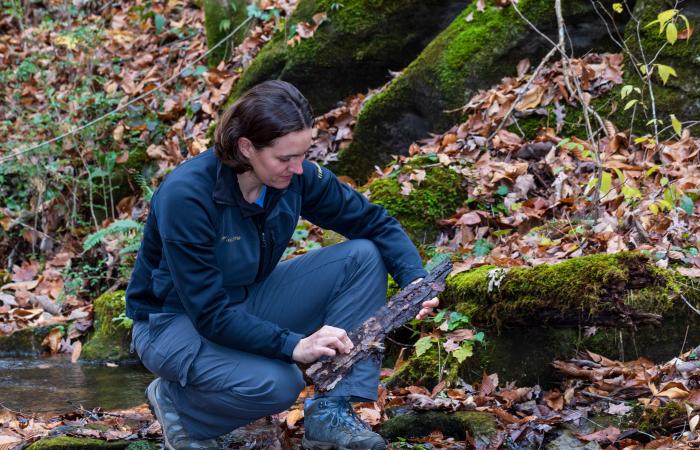 Aquatic ecologist Natalie Griffiths studies nutrients and contaminants in the Weber Branch watershed, which is in the Oak Ridge Environmental Research Park. Courtesy Carlos Jones/ORNL
Aquatic ecologist Natalie Griffiths studies nutrients and contaminants in the Weber Branch watershed, which is in the Oak Ridge Environmental Research Park. Courtesy Carlos Jones/ORNL
ORNL research lands are an international ecological benchmark and diverse wonderland of trees, plants, mammals, reptiles and amphibians
Abby Bower is a science writer for Oak Ridge National Laboratory.
The Department of Energy’s Oak Ridge National Laboratory (ORNL) is a hub for world-class science. The nearly 33,000-acre space surrounding the lab is less known, but also unique. The Oak Ridge Reservation (ORR) is a key hotspot for biodiversity in the Southeast and is home to more than 1,500 species of plants and animals.
At the intersection of Anderson and Roane counties is an important subset of the reservation — the Oak Ridge National Environmental Research Park, or NERP — a 20,000-acre ORNL research facility that has been internationally recognized by UNESCO as an official biosphere reserve unit.
“The National Environmental Research Park is a living laboratory and a major resource for conducting ecological studies,” said Evin Carter, an ORNL wildlife ecologist and director of the Southern Appalachian Man and the Biosphere Program, or SAMAB. The NERP has been a core part of SAMAB, which has focused on sustainable economic development and conserving biodiversity in Southern Appalachia since 1989.
With ORNL researchers and scientists from government agencies and academia using the NERP for diverse experiments each year, the park lives up to its status as a living laboratory.
It also lives up to its reputation as a biodiversity hotspot. As one of seven DOE-established environmental research parks reflecting North America’s major ecoregions, it represents the Eastern Deciduous Forest. The NERP comprises parts of this ecoregion that have been identified repeatedly as priorities for global biodiversity conservation, Carter said.
This designation means more than ever as climate change alters ecosystems and biodiversity declines worldwide. According to a landmark international report, on Biodiversity and Ecosystem Services, around one million plant and animal species are currently threatened with extinction.
- oak ridge national laboratory
- ornl
- ecological benchmark
- oak ridge national environmental research park
- nerp
- biosphere reserve
- southern appalachian man and the biosphere
- samab
- biodiversity
- unesco
- oak ridge reservation
- orr
- ecoregion
- culturally significant plant species initiative
- cspsi
- evin carter
- kitty mccracken
- eastern band of cherokee indians
- neon
- national ecological observatory network
- northern longeared bat
- indiana bat
- grey bat
- endangered species
- threatened species
- purple gallinule
Tragedy of the commons: Plant poaching persists in Smokies and other public lands
Written by Ben Pounds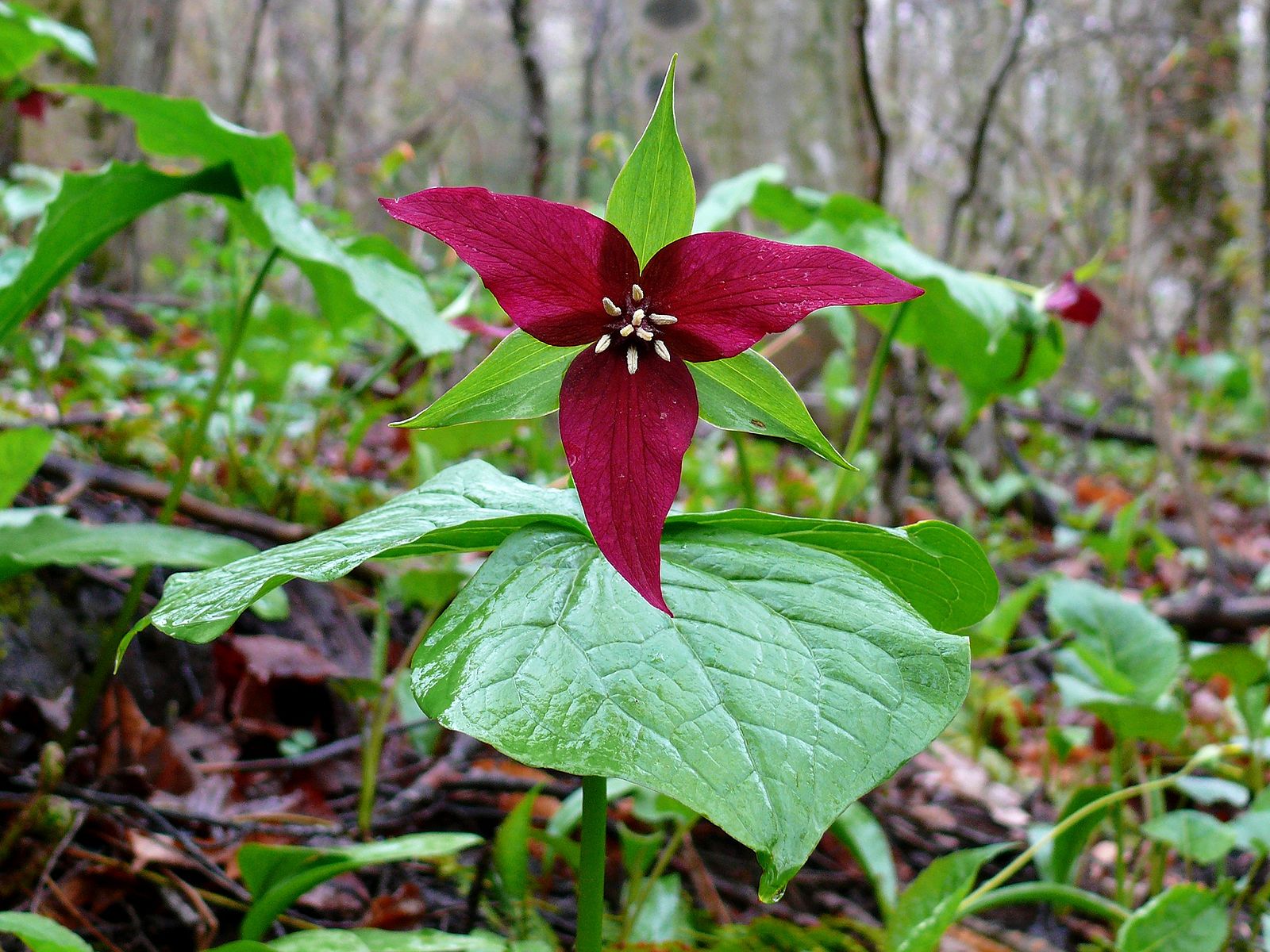 A red trillium is seen in the Southern Appalachians. It is often the target of poachers who aspire to place it in an ill-suited domestic ornamental garden. Courtesy Wiki Commons
A red trillium is seen in the Southern Appalachians. It is often the target of poachers who aspire to place it in an ill-suited domestic ornamental garden. Courtesy Wiki Commons
Forest service withholds ginseng permits to protect native Southern Appalachian plants as overall poaching persists
Paul Super has a message for people who take plants and animals from Great Smoky Mountains National Park:
It’s stealing.
“We’re trying to protect the park as a complete ecosystem and as a place that people can enjoy the wildlife and everything that lives here … but they have to do it in a sustainable way, and poaching doesn’t fit,” said Super, the park’s resource coordinator.
“Be a good citizen. Enjoy the park without damaging it.”
Super said the novel coronavirus pandemic led to the second-highest visitation to the park in 2020, just over 12 million, even with the park being closed briefly.
“This year will likely have the highest visitation ever,” he said, adding that the park is, in terms of the pandemic, a “relatively safe place for family and friends.”
Super said this higher visitation rate may lead to more poaching but it may also lead to more people who “appreciate something that a poacher would take away from them.
“Besides being illegal, that’s just selfish and rude,” Super said regarding plants and animals, and even cultural artifacts that are taken from the park.
Super is the park’s research coordinator, and is in charge of recruiting researchers to help better understand the nuances and full ramifications of stealing public natural resources. He said his researchers don’t enforce the laws, but they do alert law enforcement rangers to poaching incidents and suspicions.
- ginseng poaching
- poaching in great smoky mountains national park
- poaching in southern appalachia
- pink lady slipper
- ginseng
- smokies ginseng
- trillium
- great smoky mountains national park
- paul super
- smokies research coordinator paul super
- is removing plant from mountain illegal?
- insect poaching
- rare plant species
- ginseng trade
- butterfly poaching
- beetle poaching
- big south fork poaching
Ijams gets down to Earth with our winged friends
Written by Thomas Fraser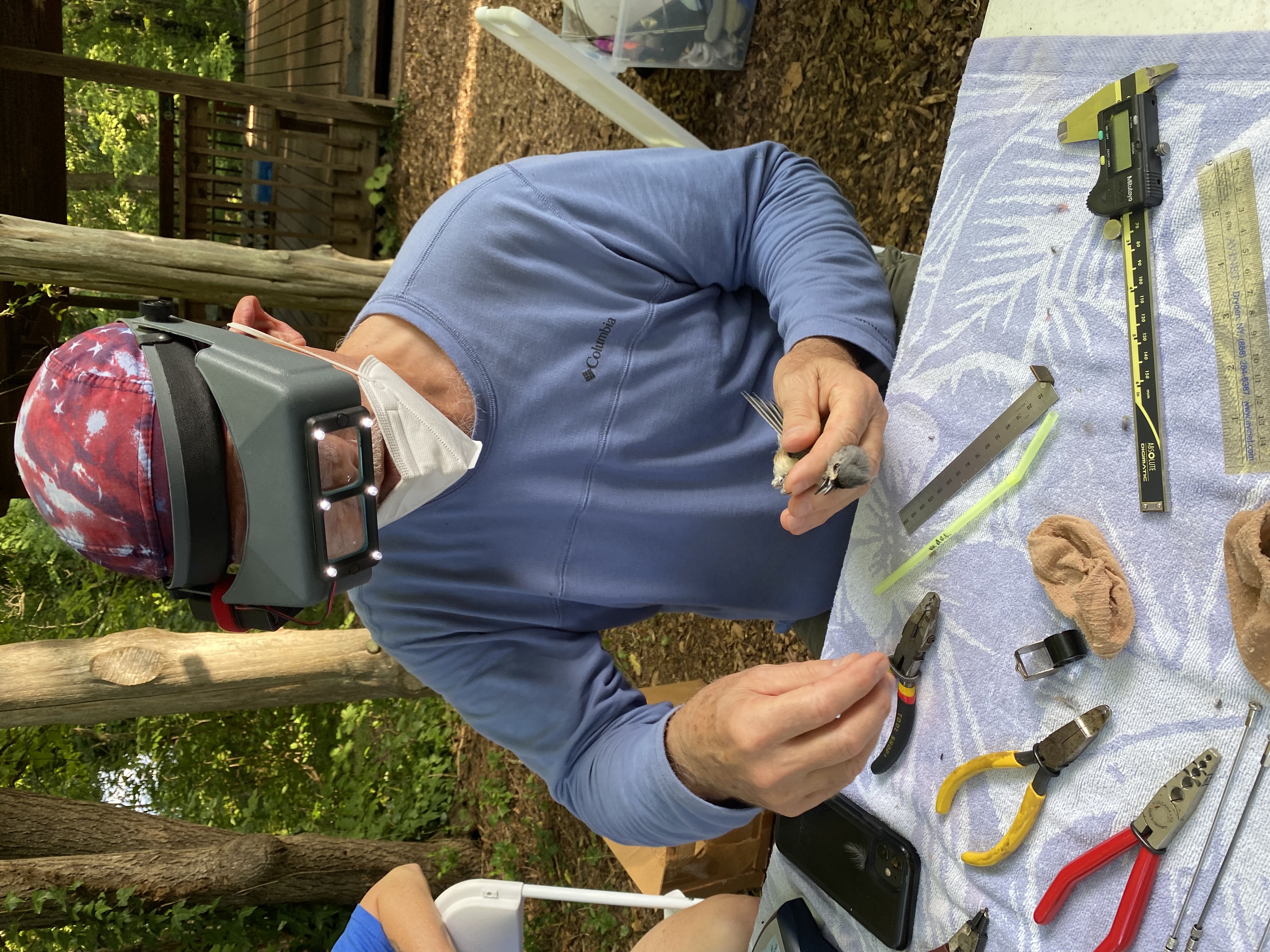
Ijams Nature Center offers a celebration of winged creatures that can bring us all to new heights
The hummingbird buzzed to freedom from a loving human hand into the early midsummer morning.
It was the latest bird to be tagged after collection from a harmless mist net as volunteer naturalists introduced the uninitiated and curious to the simple wonder of birds and the more complicated collections of data needed to ensure their wellbeing.
The hummingbird, along with at least one tufted titmouse, was just one of many feathered friends captured in the pleasantly cool air at Ijams and described in detail by naturalists and friends Saturday morning (Aug. 28) during Ijams Nature Center’s biggest annual educational showcase: the Hummingbird Festival: Celebration of Wings, presented by Ergon Terminaling Inc. and Trust Company of Tennessee.
But it was also a celebration of connections between earth and air as attendees passed from conservation displays to food and natural products and crafts stands. Animals on display ranged from an owl and groundhog to an apple-chewing opossum.
(News alert: Katy did it!) Seventeen-year cicadas were just an opening act. Now the woods are rolling with the rhythm of our annual insects.
Written by Stephen Lyn Bales A true katydid is shown here. It’s one of the main insects that provides a permanent soundtrack to your summer life in the Knoxville area. Stephen Lyn Bales/Hellbender Press
A true katydid is shown here. It’s one of the main insects that provides a permanent soundtrack to your summer life in the Knoxville area. Stephen Lyn Bales/Hellbender Press
What’s that buzz? We thought Brood X was over.
In case you haven’t noticed: It’s hot!
The “dog days of summer,” are so called because the season coincides with the period of time when the brightest star Sirius, aka the Dog Star, rises and sets with the Sun: early July through August into September.
The ancients believed that when Sirius and the Sun were in the sky together, the days were hotter. I think they got it right.
August has never been that thrilling to me, more of a month to endure. The birds have finished raising their families and are going through their late-season molt. Some of the migratory birds have already started to move south. But that doesn’t mean that our backyards are totally silent because late summer is cacophonous with insects.
During the day, the trees are filled with large, green cicadas that generally spend three years underground in their larval stage, but they are not all in sync like Brood X was, so each summer we have plenty that mature to collect en masse in our neighborhoods.
To attract females, the male cicadas do the chainsaw buzzing, but the songs are not made with vocal chords but rather special organs on the sides of their abdomens called “tymbals.” In effect, their sides vibrate loudly.
Locally in the Knoxville region we have five species of these annual cicadas. Early in the morning and into the afternoon, swamp cicadas (Neotibicen tibicen) are calling. They are also known as morning cicadas because they usually crank up by 10 a.m. with a long uninterrupted rattle that builds in intensity.
Lead is flying as bald eagles face ambush on road to full recovery
Written by Stephen Lyn Bales This grounded bald eagle at a wildlife refuge in Missouri eventually succumbed to lead poisoning. Lead from bullets and shot are the latest threat to bald eagles, the recovery of which is an American conservation success story. Betty Thompson
This grounded bald eagle at a wildlife refuge in Missouri eventually succumbed to lead poisoning. Lead from bullets and shot are the latest threat to bald eagles, the recovery of which is an American conservation success story. Betty Thompson
Once again bald eagles are in trouble: This time the threats are a deadly recipe of lead and neurotoxins.
The recovery of America’s bald eagles is one of the greatest environmental success stories of the past 50 years. From an estimated overall population of about 800 at the depth of their decline, they have rebounded to about 100,000 today living near water in Alaska, Canada and all of the lower 48 states.
Hellbender Press has covered the success story that brought our national symbol, the bald eagle, back from the brink of extinction.
The cause of that long-ago calamity was ferreted out with the help of an early citizen-scientist, a retired Canadian banker living in Florida named Charles Broley, who became interested in eagles and obtained a permit to band eaglets. Between 1939 and 1946 he banded a total of 814 of them in the nest before they fledged.
As the years passed Broley observed a population decline and initially thought habitat loss was to blame. But in an Audubon article he penned in 1958, Broley concluded, “I am firmly convinced that about 80 percent of the Florida bald eagles are sterile.”
But why? Broley was the first to speculate that the use of organochlorine pesticides, most notably dichlorodiphenyltrichloroethane, or DDT for short, was somehow the cause; but he had no proof and didn’t know how the chemical compound actually affected adult eagles.
Broley’s suspicions and others were brought to national attention by Rachel Carson in her landmark 1962 book, “Silent Spring.” DDT was outlawed in 1972 and the eagle population slowly began to recover.
And today? Bald eagles still face problems — both old and new.
The old one is lead poisoning.
More...
The 17-year cicada brood left behind some calling cards in the trees
Written by Alexandra DeMarco Here is some evidence of tree browning and “flagging” caused by the recent appearance of Brood-10 cicadas earlier this summer. Courtesy Oak Ridge National Laboratory
Here is some evidence of tree browning and “flagging” caused by the recent appearance of Brood-10 cicadas earlier this summer. Courtesy Oak Ridge National Laboratory
Tree “flagging” is a lingering sign of the 17-year cicadas’ brief time on Earth
(Alexandra DeMarco is an intern in ORNL’s media relations group.)
On the road leading to the U.S. Department of Energy’s Oak Ridge National Laboratory, drivers may notice that many of the green trees lining the entrance to the lab are dappled with brown leaves. At first glance, the sight isn’t extraordinary, as deciduous tree leaves turn hues of oranges and browns before falling to the ground each autumn.
Yet, just weeks past the summer solstice, this phenomenon is out of place and is in fact evidence of another natural occurrence: cicada “flagging.”
This spring, Brood X cicadas emerged from the ground after 17 years and swarmed across the eastern United States, leaving a trail of exoskeletons and echoes of mating calls. Cicadas emerge in such large quantities to withstand predation and successfully maintain their populations, and trees actually play a key role in their life cycle.
A male cicada attracts a female through a mating call, the sound responsible for cicadas’ shrill hum. After the two mate, the female cicada uses a sharp tubular organ called an ovipositor to slit the bark and split the sapwood of young tree branches to deposit her eggs there. These incisions, however, damage a tree’s vascular system and can cause stalks beyond the incision to die and wither, leaving behind twigs with brown leaves that resemble flags dangling from the trees.
The eggs then grow into nymphs that make their way to below ground. An oft-repeated misconception is that they’ll stay dormant for 17 years. Actually, during that time, they go through 5 life stages while feeding on the xylem (tree sap) of roots. This may further weaken saplings that were heavily infested with cicadas.
The sounds of silence: 17-year cicadas fade away as offspring prepare for 2038 performance
Written by Stephen Lyn Bales Dead cicadas are seen on concrete in Knoxville at Holston River Park. Their brief sonic reign has come to an end. Photo courtesy of Lyn Bales
Dead cicadas are seen on concrete in Knoxville at Holston River Park. Their brief sonic reign has come to an end. Photo courtesy of Lyn Bales
The cicada soundtrack of spring and early summer has come to a quiet end
“Turn out the lights, the party’s over,” sings country music outlaw Willie Nelson. “They say that all good things must end.”
Yes. Essentially Cicadapalooza 2021 is over. There may be a few late emerging males hanging on like the last few guys in the bar at closing time with hope against hope that somehow they will get lucky and Miss Wonderful will walk through the door. In this case, a female 17-year cicada clicks and clicks to let the male know she is interested or desperate to complete her mission.
As a rule of thumb, the entire periodical cicada phenomenon lasts four to six weeks but it is extremely weather dependent. Insects are ectothermic and need warm to hot temperatures to be active.
I saw my first evidence the cicada emergence had begun at Ijams Nature Center, where I worked for 20 years as a naturalist. Executive director Amber Parker told me where to look for emergence holes: under the sugar maple at the back of the Universal Trail. That was on April 20. I found the small exit tunnels but no cicadas or exuviae. I knew skunks, foxes, crows, jays, owls, dogs, cats, and anything else that will eat a bug quickly consume the first ones above ground.
Bald eagles fly with the Tennessee angels who helped save them from extinction. We must keep them on the wing.
Written by Stephen Lyn Bales American Eagle Foundation founder Al Cecere releases a rehabilitated bald eagle at Ijams Nature Center on Aug. 12, 2016. The foundation named her Summit in honor of UT Lady Vols basketball coach Pat Summit. Photo by Chuck Cooper.
American Eagle Foundation founder Al Cecere releases a rehabilitated bald eagle at Ijams Nature Center on Aug. 12, 2016. The foundation named her Summit in honor of UT Lady Vols basketball coach Pat Summit. Photo by Chuck Cooper.
Is the bald eagle’s remarkable comeback fading down the stretch?
(Part one in a series)
It was a damp morning in early spring 2005 when Paul James and I met Linda Claussen at Seven Islands Wildlife Refuge along the French Broad River in east Knox County. Heavy rains had fallen through the night, but the clouds were beginning to break. As we walked down Kelly Lane toward the river the vocalized yearnings of thousands of chorus frogs could be heard singing from the soppy floodplain along the river. Spring was definitely here.
The refuge itself was the brainchild of Linda’s late husband, Pete. In the late 1990s, he formed the Seven Islands Foundation, a privately owned land conservancy, and began setting aside property to be protected and restored to a variety of natural habitats. Most of the acreage had recently been fescue pasture maintained for grazing livestock and hay production.
 Eva Millwood holds Brood X cicadas on her property in South Knoxville in this submitted photo.
Eva Millwood holds Brood X cicadas on her property in South Knoxville in this submitted photo.
We will see a groundswell of East Tennessee 17-year cicadas as the heat comes on.
We have been hearing about it for weeks, online and on TV and in print. After 17 years underground, millions of cicadas are going to climb out of their burrows, shed their juvenile skins, unfurl their wings and fly up into the trees for one last grand jester of panache and reproduction and death. You even read about Brood X cicadas in Hellbender Press.
The Tennessee Wildlife Resources Agency posted a recent Instagram photo of a wild turkey jake with a crop stuffed full of cicadas, and there are reports of cicadas emerging en masse in parts of Tennessee. But your local searching self may ask: Where are they?
Insects are largely ectothermic. That means their body temperature comes from the surrounding air, water or ground temperature. The periodical cicadas need a ground temperature of roughly 68 degrees, eight inches deep to become very active. And we really have not had that for a sustained length of time.
Last week seemed to be destined to be the first big week of the emergence of Brood X. Monday started strong but the weather turned unusually cool for early May with daytime highs in the low 60s. Some of the cicadas started to ease out but it was primarily dozens, not hundreds or thousands, and certainly not 1.5 million per occupied acre. And remember, they are not everywhere.